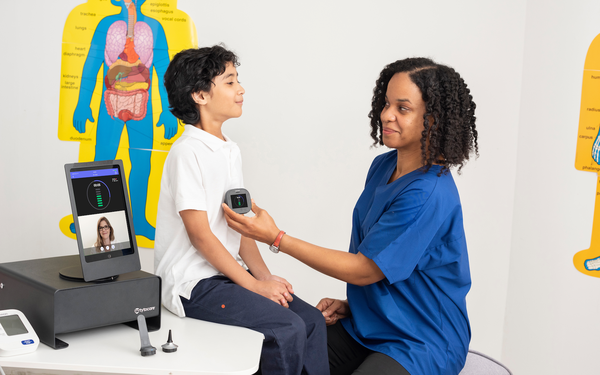
The new school year has begun, so
let’s talk about school nurses.
Used to be when you felt sick at school, you were sent to the school nurse and she, in turn, sent you home.
Of course, times have changed.
For one thing, you’re lucky if your kids’ school even has a nurse, a situation being compounded by America’s overall nursing shortage.
Just 40% of schools have a full-time
registered nurse and 35% a part-time one, reports Frontline Education, a marketer of school administrative software.
You might think the problem would be worse in public schools, but 84% of
them have full- or part-time nurses, compared to just 52% of charter schools and 35% of private schools.
Another thing that’s changed: Kids who feel sick at school may get examined by a
doctor -- thanks to telehealth.
advertisement
advertisement
We learned this from TytoCare, an eight-year-old primary care provider that works directly with nurses or other school employees in 2,500 schools across the
country.
By using a dedicated FDA-cleared TytoCare device and tablet called the Pro Smart Clinic, they can connect students with doctors for medical-grade physical exams -- from listening to
hearts and lungs to examining ears, throats, and skin.
TytoCare contracts with health systems or virtual providers who provide the service to individual schools or districts. Some examples
include Guilford County, North Carolina schools, served by Cone Health, and Sioux Falls County, South Dakota schools, via Avel eCare.
Dedi Gilad, TytoCare’s CEO and co-founder, tells
Pharma & Health Insider that this system has led to reduced emergency room and urgent care visits. “One partner health system in Texas surveyed parents and found that 27% would have
gone to the ER, and 45% would have gone to an urgent care center if they did not have access to this care at school,” he relates.
An added advantage of TytoCare is that even kids without
doctors can get to see a doctor, particularly apropos these days due to families losing Medicaid coverage, or immigrant children whose parents may fear bringing them to an in-person doctor.
And when we say they “see” a doctor, they actually do see him or her on-screen.
And oh yeah, remember how the school nurse would send you home? TytoCare says that 89% of
students it sees return to class the same day.
TytoCare, which also has a home device called the Home Smart Clinic, works with 250 health systems and has 1.6 million patients registered for
its platform.